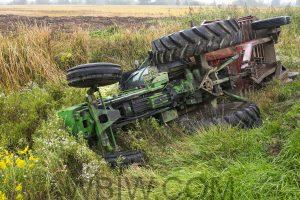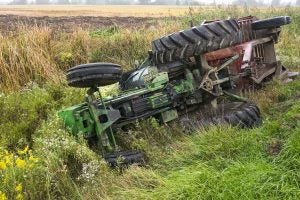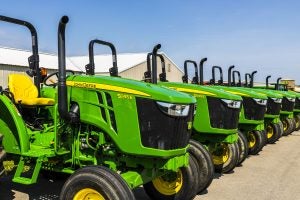
INDIANA – Agricultural careers are one of the most dangerous professions you can have. Farmers are seven times more likely to die while at work than any other employee in the U.S.
Accidents with equipment, grain entrapments, chemical exposure — there are so many potential dangers lurking around the farm.
Purdue University’s Agricultural Safety and Health Program has been monitoring farm-related fatalities in
Indiana for nearly 60 years. The earliest identified summary of cases, published in 1966, examined 76
fatalities reported during 1963.
While the total number of farm-related deaths has gradually declined the fatality rate per number of workers remains one of the highest of all Indiana occupations.
There were 20 documented fatalities in Indiana in 2021. One victim was a child (age 1) and eight individuals age 60 and older were documented to have died in farm-related incidents in 2021.
Tractors are the most common agent in farm-related fatalities, representing as many as 52% of all documented cases in the past 10 years, with 6 reported cases (30%) in 2021.
Over the past 50 years, tractor overturns have accounted for the single largest cause of farm-related
deaths, even considering that Rollover Protection Structures (ROPS) have been standard equipment on new tractors since 1985.
In fact, more farmers die each year than police officers, firefighters, or other emergency responders. More than half of deaths occurring on the farm are a result of tractor roll-over accidents, leading to nearly 100 deaths per year.
- 80 percent of deaths caused by rollovers happen to experienced farmers.
- 1 in 7 farmers involved in tractor overturns is permanently disabled.
- 7 out of 10 farms will go out of business within five years of a tractor overturn fatality.
- The probability of death for a rollover in a tractor without rollover protection is 40 percent.

Many fatalities could be prevented if the tractor was fitted with a rollover protection (ROP) device. ROPs are 99 percent effective in preventing injury or death in the event of an overturn when used with a seat belt, and 70 percent effective when used without a seat belt. Unfortunately, more than half of tractors in use in the United States do not have rollover protection.
Tractors are used in nearly every type of agricultural operation and serve a variety of functions. They are a key piece of equipment for any type of land management and can be very expensive to purchase, even in the millions of dollars. Any tractor built after 1985 is required to have roll-over protection devices and a seat belt, but that doesn’t mean all farmers will use them or even have “new” equipment. It is not uncommon for farmers, especially smaller farms, to utilize older equipment. Since farms run on tight profit margins, they often try to purchase cheaper, used equipment, repair their own equipment, or make do with another piece of equipment to avoid purchasing something new and expensive.

Retrofitting your tractor to have an ROP device installed can cost about $1,200 for the average tractor, but yet can be expensive for some farm operations.
There is a national project offering financial rebates to help incentivize farmers to install ROPs on their equipment. The rebate program can help bring your out-of-pocket costs to less than $500. You can access the National ROPS rebate program here.
Some Information provided by: AGDAILY



